How does an orchid differ from a phalaenopsis?
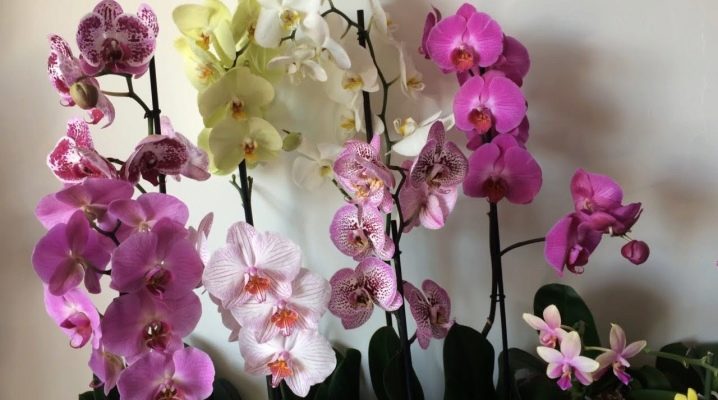
Orchids are very popular for their exotic beauty. However, indoor plant lovers often confuse different types of orchids with phalaenopsis. This article will tell you how to distinguish phalaenopsis from an orchid. A description of each of these species of the orchid family is discussed below.
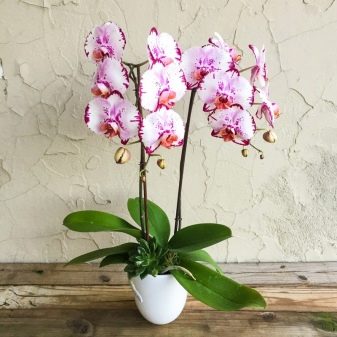
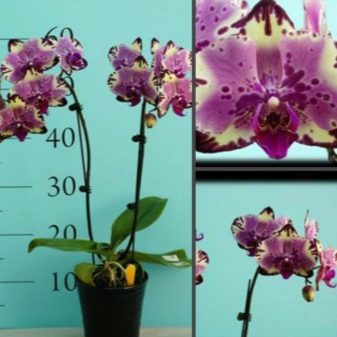
Orchid
This beautiful flower belongs to herbaceous perennial plants. The orchid family includes more than thirty thousand species. Moreover, orchids are terrestrial and epiphytic.
Terrestrial ones are distinguished by simple, thick leaves without petioles. Shoots are composed of outer and inner leaves. There are 6 petals in total. One inner petal is called a lip. It has a bright color and plays a key role in the pollination process.
For pollination to occur, orchids need insects.


Several varieties of orchids are considered the main ones.
- Angrekum. Requires specific conditions (light, high humidity and soil). The flowers have an incredibly pleasant aroma, which intensifies in the dark, have a glossy white color.
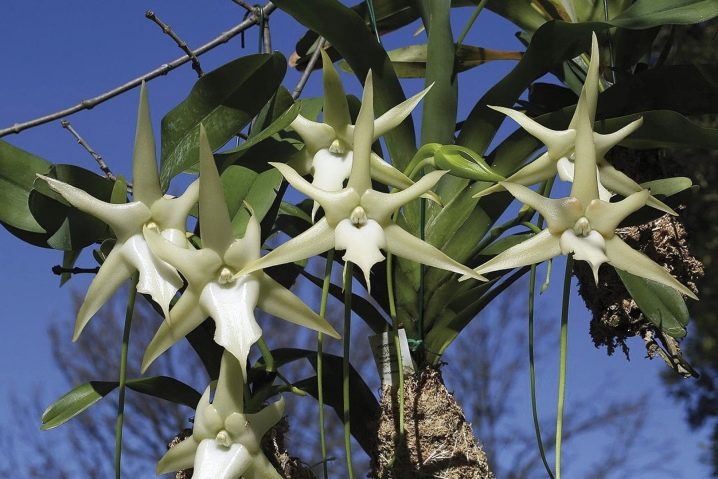
- Anguloa. It attracts attention with original flowers that resemble tulips. Flowers can be white, red, yellow, brown. The difference in temperatures between day and night has a positive effect on the plant.
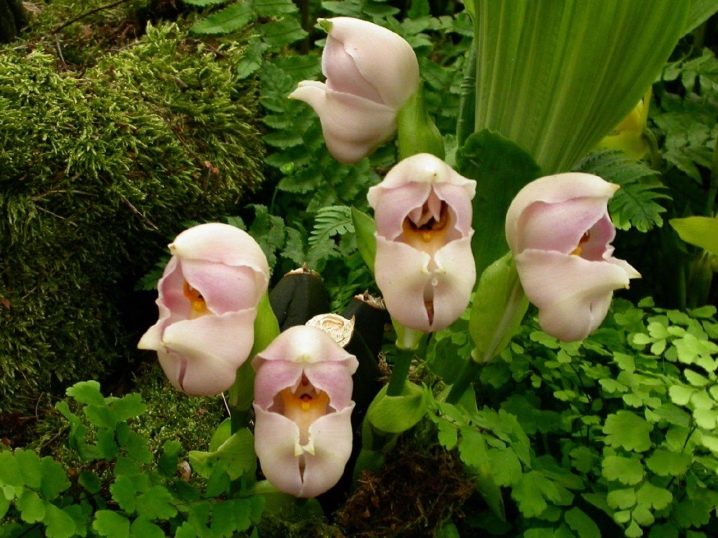
- Arpophyllum. Inflorescences of lilac and pink shades are similar to candles. Flowering begins simultaneously throughout the plant, pleasing to the eye for two and a half weeks. During this period, it is necessary to feed from nitrogen and phosphorus.
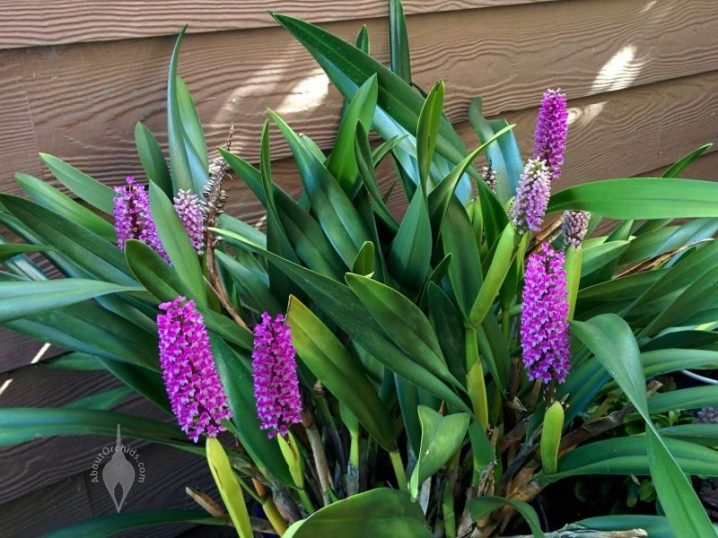
- Bletilla. It is considered the most beautiful and easy to care for. The petals resemble a gladiolus. Leaves reach thirty centimeters, have a pointed shape.
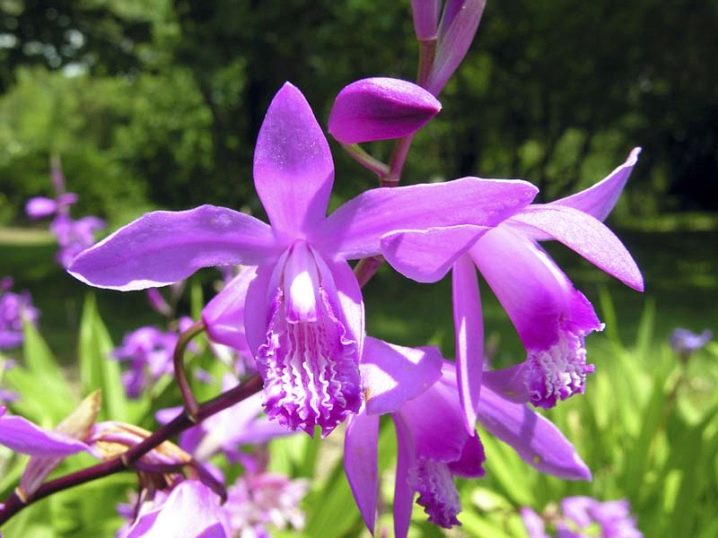
- Brassavola. The plant loves moist soil and the same air. The leaves are 20 centimeters long. There are five flowers on the peduncles. The heart-shaped lip is white in color.
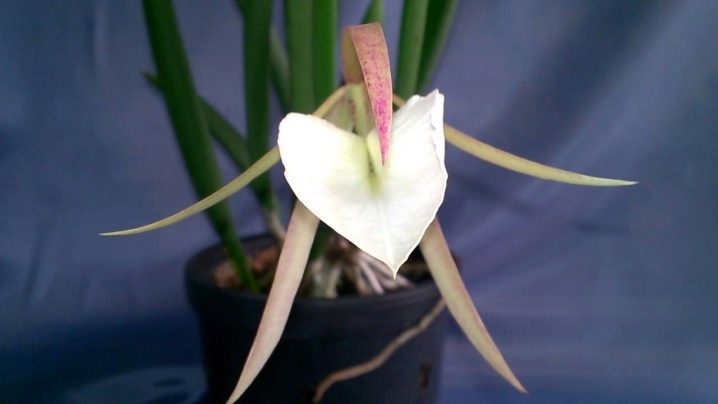
- Bulbophyllum. Representatives of this species are considered the most numerous. The plant has a small root system that does not need soil. The roots must be bare. Delicious aroma.

- Vanilla. The well-known spice is the flat-leaved orchid called vanilla.
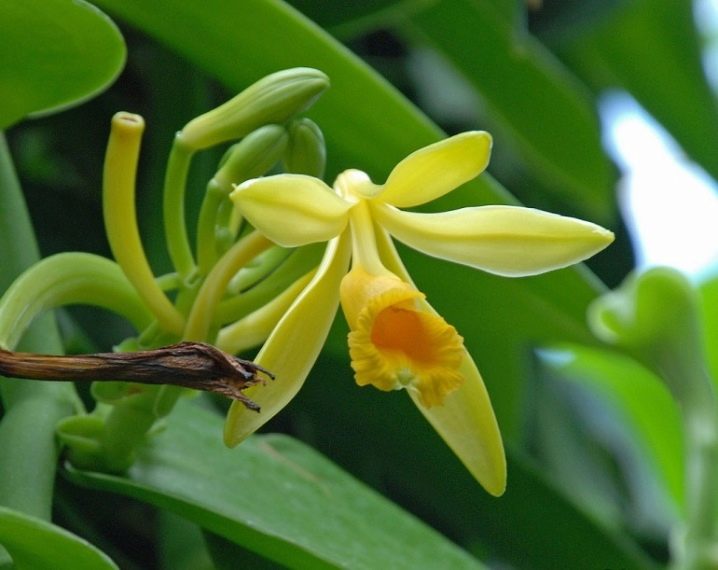
- Galeander. A large plant that requires a lot of space. The leaves are thin, reaching 15 centimeters in length. There are many colors, pleasant aroma. Bloom in summer for three weeks.
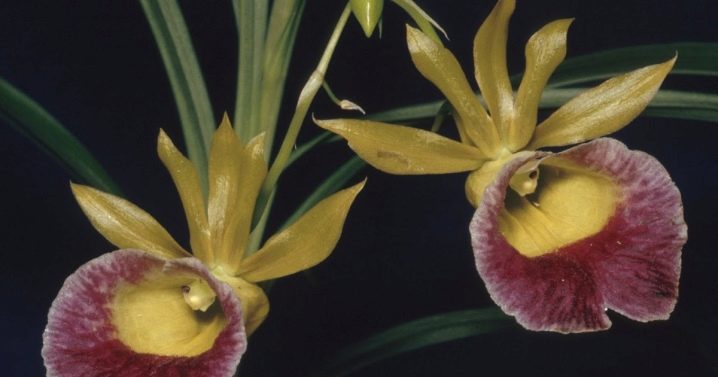
- Grammatophyllum. The largest orchid. The minimum size is 50 centimeters. Peduncle - up to one meter.
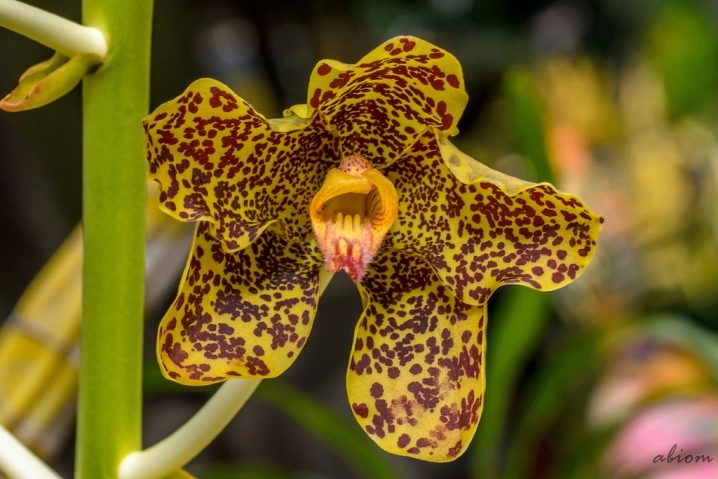
- Paphiopedilum. The flower looks like Cinderella's shoe. Has an original color, iridescent leaves. Differs in a number of features in care.
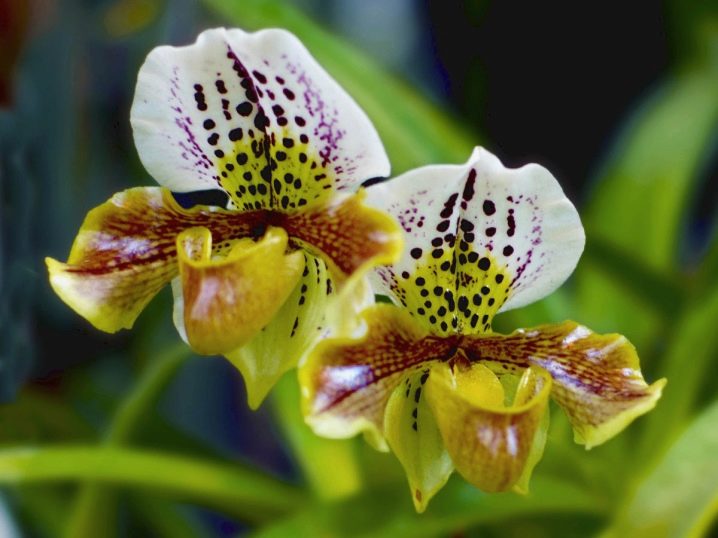
- Sarcochilus. The plant has fleshy, narrow leaves. The peduncle reaches 50 centimeters. Has a small number of colors.
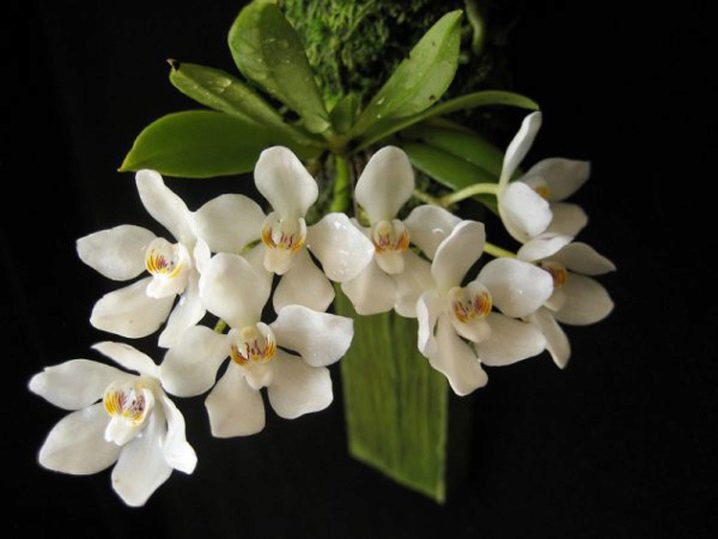
- Habenaria Radiata. The people call it the white heron. This refined and delicate plant looks like a beautiful bird. Leaves are relatively narrow. Peduncle - up to half a meter, there are 8 flowers on it.
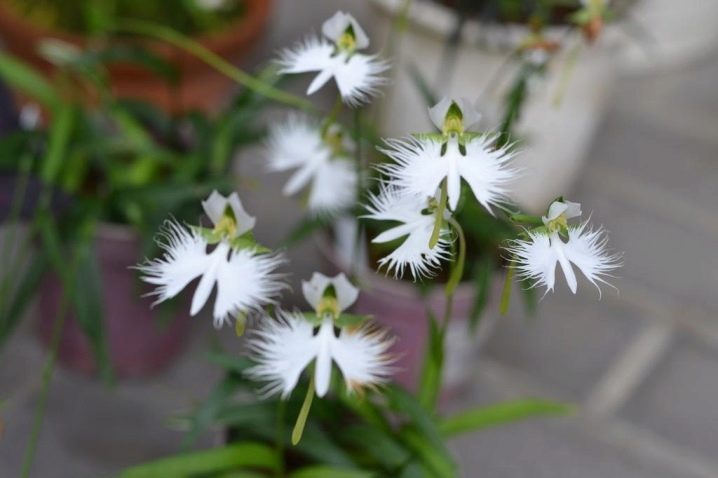
- Cymbidium. Leaves are hard. Peduncle - more than a meter, has a small number of flowers.
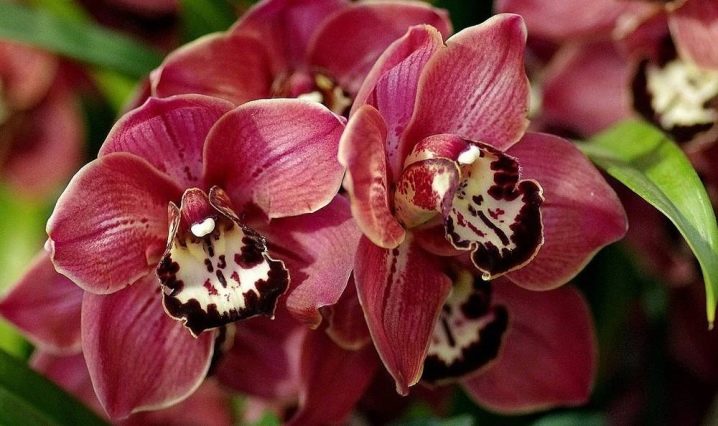
Phalaenopsis
It is an epiphytic plant that is common in the Philippines and some other countries. The leaves are thick, the plant grows up to 50 centimeters. Airy roots, light green. The peduncle resembles a butterfly. Like other orchids, there are 6 petals, one of which is called the lip. The plant blooms for 2-6 months. During flowering, it forms a strong and tart aroma.
Let's consider the main subspecies.
- Amabilis. Peduncle up to 1 meter, with up to 30 flowers with a delicate and delicate aroma. The petals are usually white. Requires air humidity up to 80%.
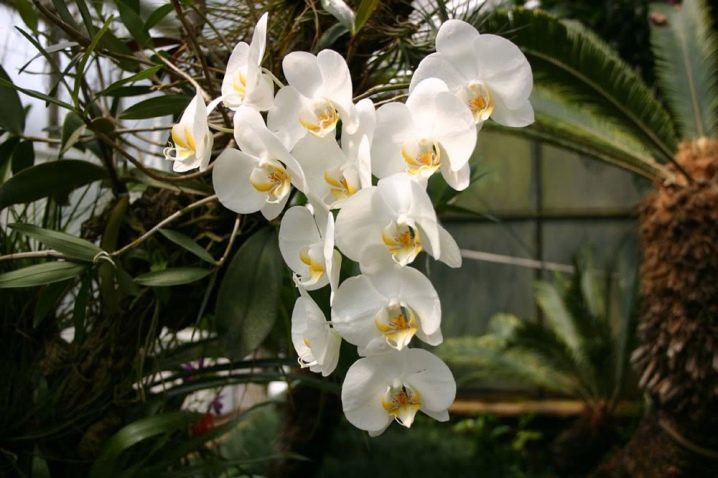
- Schindler. It has strong, elongated leaves. Peduncles - up to 1.5 meters, they can grow up to 200 flowers. The petals are colored in shades of light pink. Requires a serious attitude to the temperature regime.

- Stewart. Lush flowers branching on peduncles look like lianas. The petals are white with red dots. The plant requires high humidity, good lighting and correct temperature conditions.
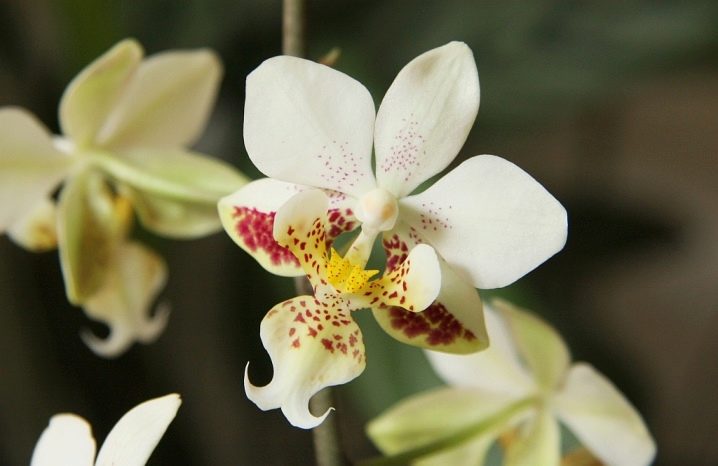
- Sander. An extraordinary and expensive flower. Shoots of pink shades bloom all year round. The leaves are emerald, pointed. Loves high humidity. This plant has no aroma.
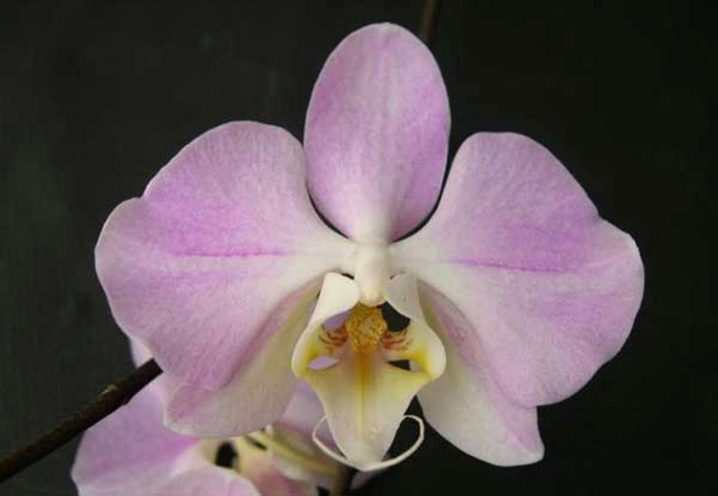
- Horse. Miniature plant. During flowering, old leaves die off, then new ones appear. The flowers are small, up to three centimeters in diameter. They are pale pink or bright lilac in color.
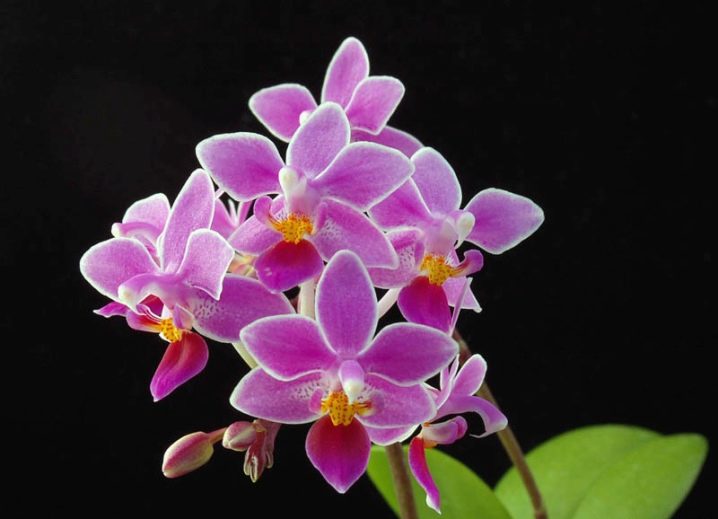
- Sakura. Has the most delicate color (white border with the middle of a pink or lilac tone). Differs in good endurance. The stalk is thickened, but short. Peduncles are curved. Flowering can be observed up to twice a year.
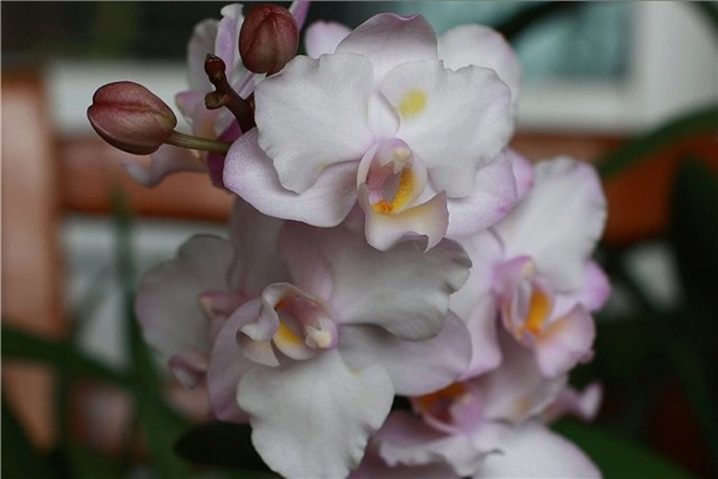
- Luddemann. The leaves are light green in color. Flowering lasts from December to March. During this period, the plant requires abundant watering. The color can be different (from bright yellow to purple).
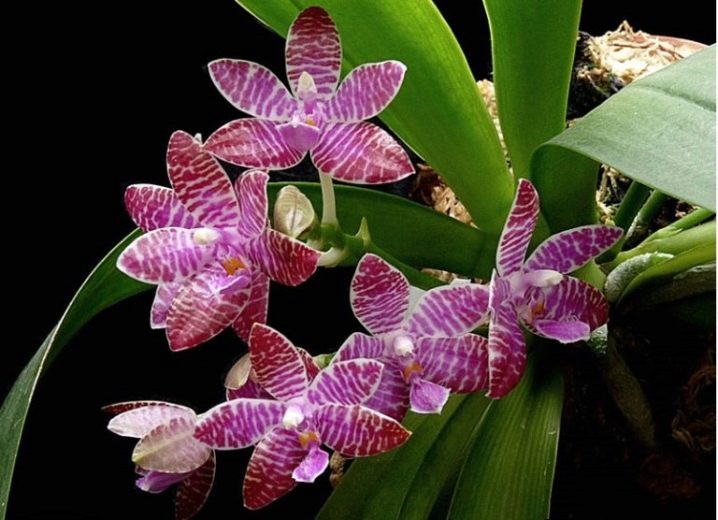
- Giant. It has huge leathery leaves, which are 1 meter long and 40 centimeters wide. The color is bright (yellow and red shades prevail). The shoots exude a citrus aroma. The first flowering can be observed after four years.
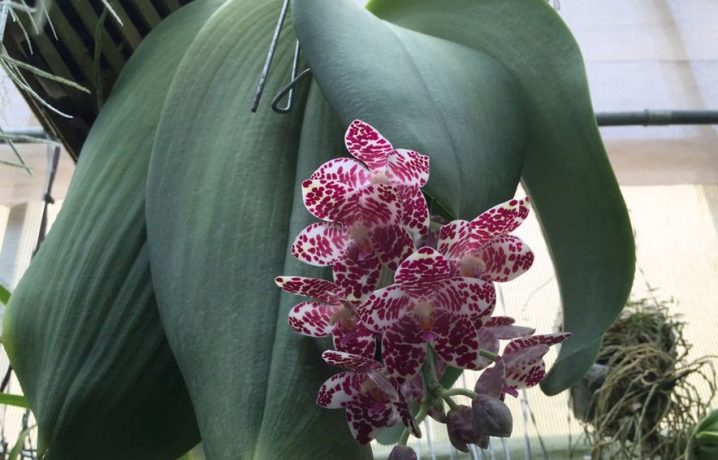
- Pink. Plant height is 30 centimeters. The diameter of the flowers is up to three centimeters. The petals are light pink in color with beautiful tints and a bright pink center. When growing, it is necessary to maintain optimal air and soil humidity, as well as take into account the air temperature.
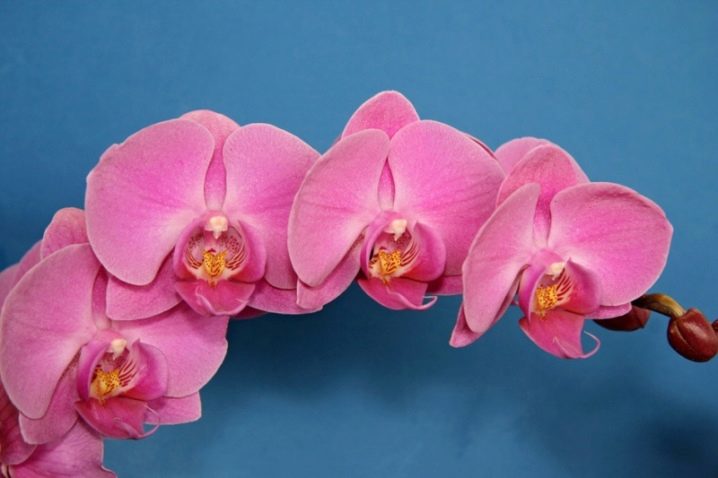
Differences and similarities
Phalaenopsis is considered an unpretentious plant, it does not require special attention to itself. Therefore, for beginners in flower cultivation, this option will be the best. Most other types of orchids are very demanding and need care (with the exception of some varieties).
As for the appearance, the orchid is distinguished by the presence of small or large light green leaves. In most cases, they are hard, long and pointed. Have Phalaenopsis leaves are semicircular. Another difference is its reusable flowering.
If we talk about growing conditions, then for an orchid, temperature drops within ten degrees are favorable. Felenopsis does not need temperature changes. However, he can easily tolerate humid air, although orchids in most cases do not like high humidity.
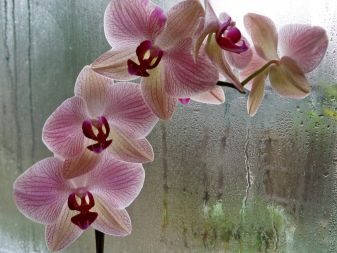
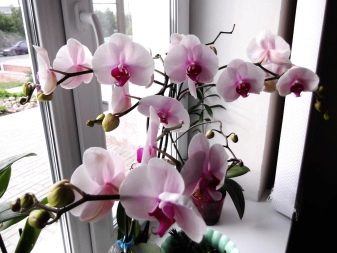
Many orchids cannot tolerate direct sunlight. In addition, they need heavy and dense soil. Phalaenopsis needs soil only for support.
The main similarities of plants are in several points:
- moisture accumulates in the leaves;
- the leaves are long (the only difference is in their shape);
- when breeding, it is important to take into account the conditions of lighting and humidity;
- watering of flower crops is carried out by the immersion method.
In conclusion, it should be said that the indoor flowers in question are stunning with their magnificent appearance. By purchasing this or that plant, you can get an unforgettable feeling of joy from the beauty of flowers. The main thing is proper care and attention.
For information on the differences between orchids and phalaenopsis, see the next video.































The comment was sent successfully.